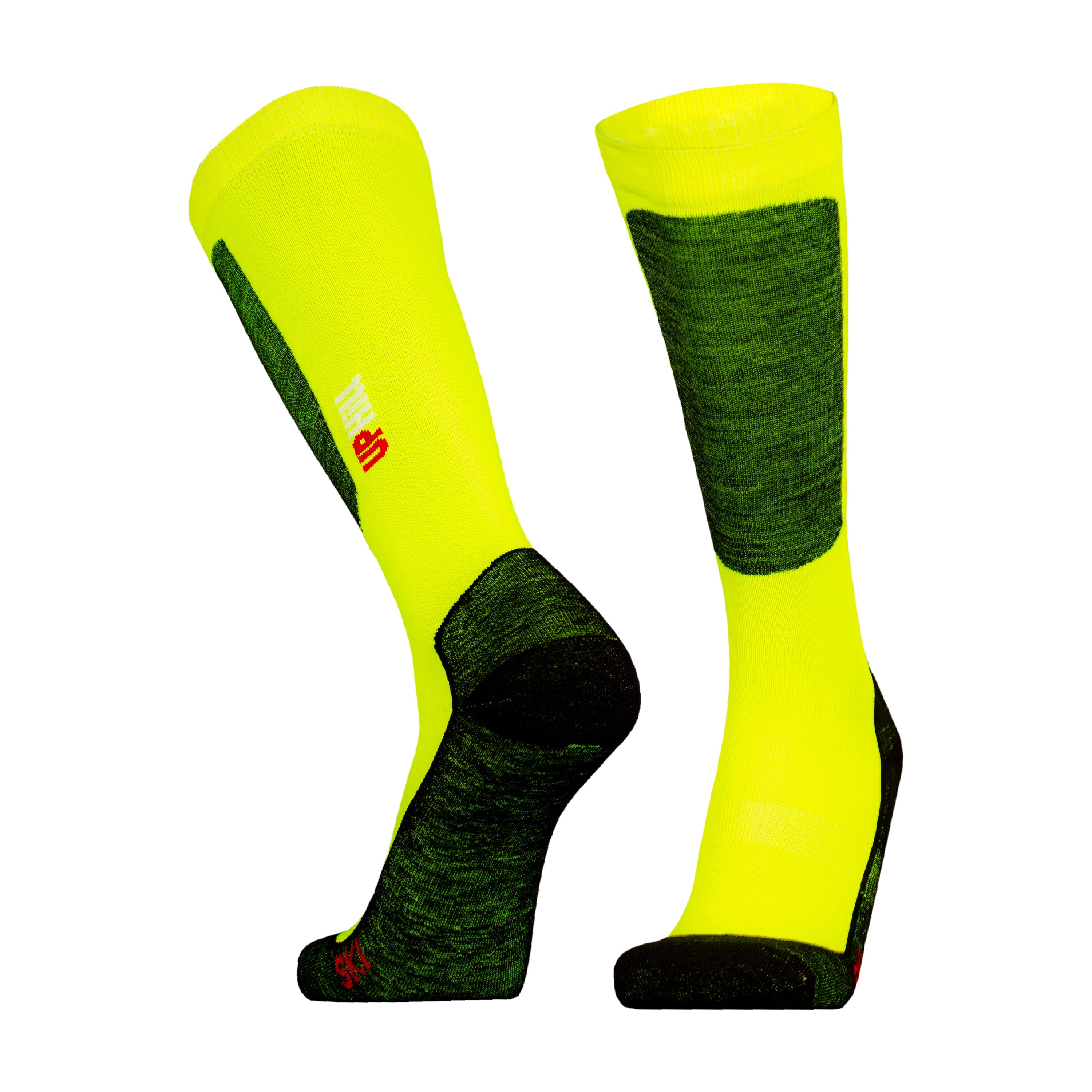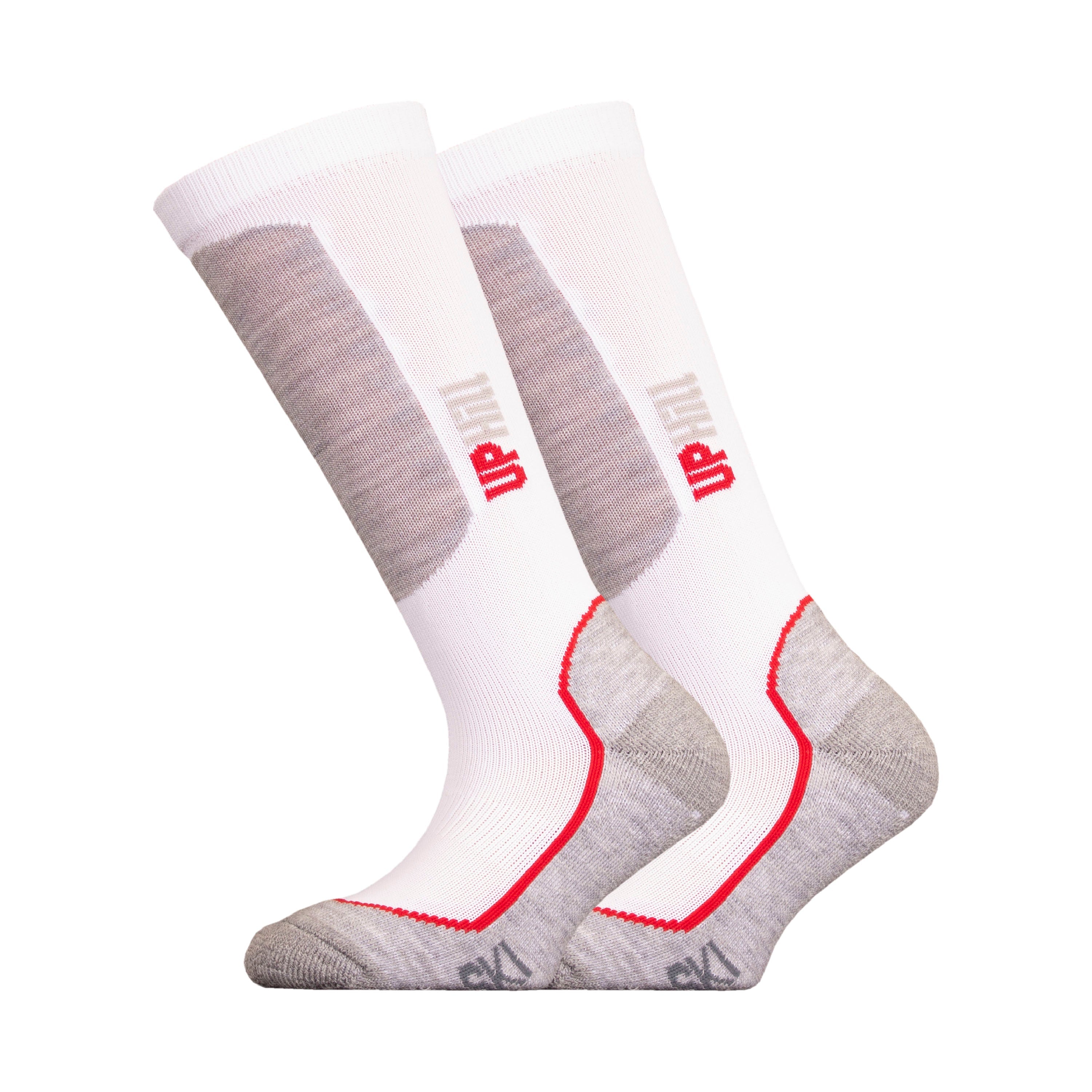Ski socks are an essential piece of ski equipment, offering both performance and comfort in cold and demanding conditions. UphillSport ski socks are designed with the skier's needs, weather conditions and activity level in mind.
One of the most important features of ski socks is their ability to transfer heat and moisture. Skiing is a physically demanding sport, so it is important that the sock is able to wick moisture away from the skin, keeping feet dry and warm.
Fit is another important feature. UphillSport socks have cushioning in the sock, especially in the heel and foot areas. This cushioning helps absorb shock and prevent chafing and blisters that can occur in ski boots. In addition, ski boots may have special reinforced areas, such as the toe and heel areas, to increase durability and protect against wear and tear.
Ski socks are usually designed to fit snugly and flexibly on the foot, preventing them from dripping or wrinkling in ski boots. Seamless construction reduces chafing and discomfort, which is especially important on long ski trips or during competitions.
The range of ski socks covers different thicknesses and lengths, so users can choose the right sock type for their needs and conditions. For example, thin technical socks are better suited for warmer conditions and active skiing, while thicker and warmer socks are a better choice for colder conditions and casual skiing.
Additional features such as compression and ventilation panels can also be found in ski socks. Compression socks can improve blood circulation and reduce fatigue and muscle damage, while ventilation panels provide more ventilation and temperature regulation.
Overall, ski socks are an essential piece of ski equipment, offering performance, comfort and protection in varying weather and skiing conditions. Careful design, quality materials and versatile features make them an indispensable part of a skier's equipment, whether for skiing, snowboarding, hiking or competition.
One of the most important features of ski socks is their ability to transfer heat and moisture. Skiing is a physically demanding sport, so it is important that the sock is able to wick moisture away from the skin, keeping feet dry and warm.
Fit is another important feature. UphillSport socks have cushioning in the sock, especially in the heel and foot areas. This cushioning helps absorb shock and prevent chafing and blisters that can occur in ski boots. In addition, ski boots may have special reinforced areas, such as the toe and heel areas, to increase durability and protect against wear and tear.
Ski socks are usually designed to fit snugly and flexibly on the foot, preventing them from dripping or wrinkling in ski boots. Seamless construction reduces chafing and discomfort, which is especially important on long ski trips or during competitions.
The range of ski socks covers different thicknesses and lengths, so users can choose the right sock type for their needs and conditions. For example, thin technical socks are better suited for warmer conditions and active skiing, while thicker and warmer socks are a better choice for colder conditions and casual skiing.
Additional features such as compression and ventilation panels can also be found in ski socks. Compression socks can improve blood circulation and reduce fatigue and muscle damage, while ventilation panels provide more ventilation and temperature regulation.
Overall, ski socks are an essential piece of ski equipment, offering performance, comfort and protection in varying weather and skiing conditions. Careful design, quality materials and versatile features make them an indispensable part of a skier's equipment, whether for skiing, snowboarding, hiking or competition.



















